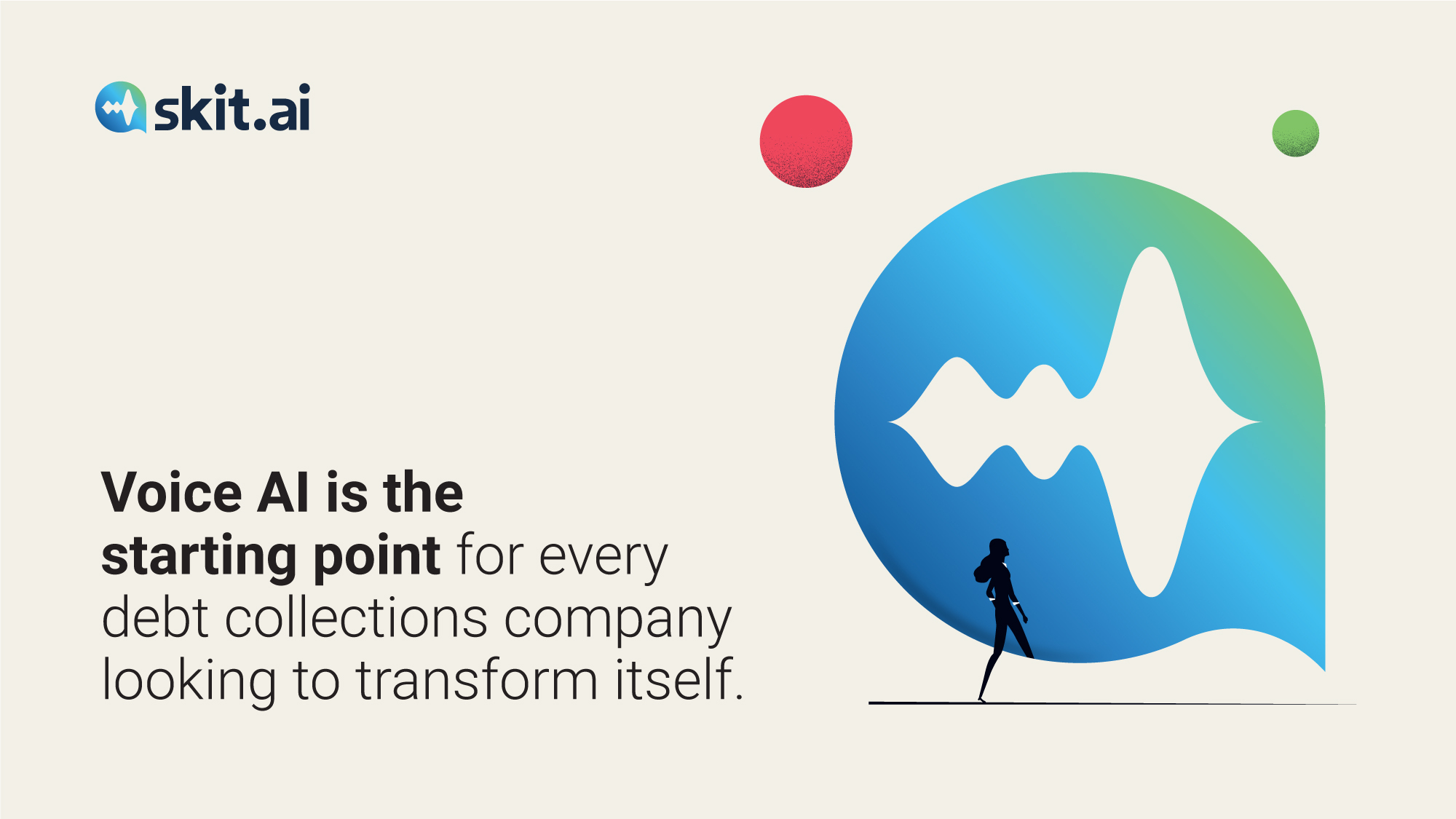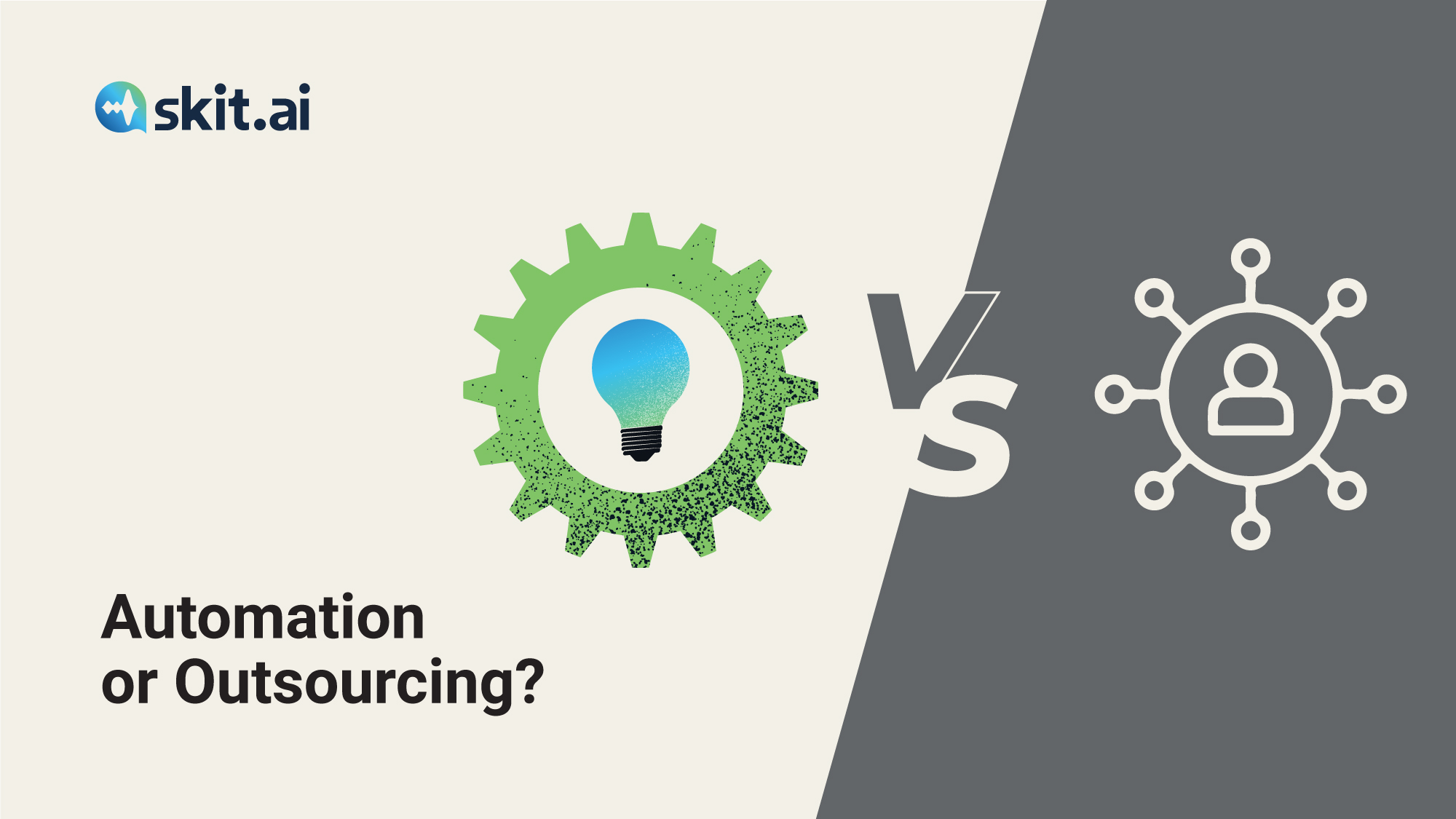The need for digital transformation (DX) can hardly be overemphasized. The need for DX and automation is becoming more conspicuous in the debt collection space. Globally, companies are expected to spend a whopping $1.8 trillion on DX technologies, and what’s more incredible is that DX spending will sustain the momentum and grow at a whooping CAGR of 16.6% between 2021-2025 (IDC DX spending guide).
While the investment and gung ho surrounding DX are real, typically, companies find it hard to succeed at DX, and further challenging is to sustain that success. Only ⅓ of companies succeed at DX, and a much smaller fraction has been able to sustain that success. This blog focuses on one technology that has proven to have a high business impact, and success rates, while being easy and quick to deploy, i.e., Voice AI.
Debt collection space has not remained insulated from the recent tumultuous years. The industry is amidst epochal changes as challenges mount in 2022. The overall grim economic forecast, inflation, and frequent regulatory changes make it imperative for debt collection companies to transform. In 2010, U.S. businesses placed $150 billion in debt with collection agencies, who could collect just $40 billion of that total. On delinquent debt, the industry averages a 20% collection rate, a decrease from 30% a few decades ago.
Technology is the only potent tool capable of overcoming core challenges and transforming debt collection companies.
Ironically, 7 in 10 U.S. small businesses put off technology decisions and are invested deeply in day-to-day tasks, according to a 2021 study from Xero, a global small business platform. The implications of this are clear–companies will not be able to incorporate technology that is vital to their long-term survival. No wonder the majority of DX efforts result in digital grief. Hence the discussion on a technology that brings about quick and easy transformation is vital. But first, let’s deep-dive into the challenges that are crippling collection agencies.
As CXOs look forward to improving the performance of debt collection agencies, here are the core problems they are trying to solve:
Efforts have been made to solve these problems, emanating out of 8 core challenges:
What Digital Transformation (DX) or Being Digital-first will do?
DX is essential if a company wants to thrive in the long run. But it is a precarious journey, and only when prudent technology incorporation is done, it brings about positive outcomes.
For the same purpose, we delve into the nuances of technology that a debt collections agency can incorporate. Post transformation, debt collection agencies can leverage technology to be more agile, more efficient, and automate most of their processes.
Technologies Enabling Debt Collection Companies
We have classified the technology into two parts – Those that help in communication and customer support. and those that support the business function.
A. Customer Support Technologies
i. Voice-Based Conversation Technologies
We can look at voice-based technologies from a standpoint of their newness. This is important because most debt collection companies have to decide what to upgrade, integrate and replace.
- Dialers and Telephony
- IVRs
- Voice AI or Voicebots
- Voicemails
- Voice Analytics
The larger discussion here would be about legacy systems. Dialer and telephone are very important and can be of great value if they are on the cloud. IVRs are still useful, but are equally frustrating, so a decision to either replace them or upgrade them is a big one. Voice analytics is a new and emerging tech, and debt collections companies will benefit if they leverage it. We will discuss Voice AI in detail, as the potential for value creation is incredible.
ii. Text-Based Conversation Technologies
They have been the oldest ones and have also been a part of legal mandates. These technologies are a significant part of interactions with customers, notifying them at the right time.
- Chatbots and Text Messages
- Using Email in Debt Collection
Text messages have been a vital part of debt collection as they are mandated by regulations. Chatbots are new and are improving rapidly, but since debt issues are complicated, it is not the favored go-to modality for problem resolution.
B. Technologies Supporting Business Function
These technologies power the business function of debt collection agencies and help them operate at better operational efficiency and agility.
- Collections CRM for Debt Recovery
- Debt Collection Compliance Software
- Payment Gateways
They are very essential and can help debt collection agencies perform operationally better.
Analysis of Cost Structure
To assess the impact of technology, it will be necessary to analyze its impact on cost and revenue. Typically the cost structure of a debt collections agency is like this:
Even a cursory look at the graph makes it abundantly clear that wages are the most significant element of the cost structure, ranging near 42%. Hence a technology that helps debt collection agencies minimize this cost via automation will have a significant impact on the structure of collections agencies.
Call Automation via Voice AI
Voice AI is the most disruptive technology of our times since it automates the most expensive part of contact center operations – calls and conversations.
It is one-of-its-kind technology that can enable debt collection companies to make complete calls without requiring a human agent. Lately the Voice AI technology-based SaaS platforms have become quite affordable and quick to deploy. Hence are creating large competitive advantages for early adopters.
AI-enabled Voice Agents have been optimized to understand spoken language and strike intelligent conversations. The voice engine picks up not only what the customer is saying but also the semantics of the conversation.
Perhaps it is the most disruptive of all the present technologies as it is empowered to answer customer calls, and can reach them out independent of human agents. They are also excellent at updating customers and adhering to compliance requirements. They are proven to cut costs and improve agent productivity and collections rate.
Read more about How – The Magic Pill of Voice AI can solve Debt Collections Challenges
Solving the Biggest Challenge – Automating Voice Conversations
A major chunk of the cost of a debt collection agency involves human agents’ salaries and similar expenses towards that end. Today, for the first time, companies have the technology to automate voice conversation and make calls possible without the need for human agents for as much as 70% of call volume.
We are in this section to delve deep into this new era of technology that will help companies transform truly.
Listen to Skit.ai’s Voicebot in Action

Voice AI Software for Debt Collections Industry | Skit.ai
The rapid rise in call volumes, defaults, demand for remote resolution of disputes, and diminishing CX have resulted in collection agencies scrambling to catch up.
The need for better outbound collections efforts—along with managing increasing volumes of inbound inquiries from customers—is putting pressure to scale contact center teams, an undesirable and herculean task.
Call center turnover (30 – 45%) has always been a challenge and has generally been twice as high as the industry average (13.5 – 18.5%), while collection agencies perform worse, with some reporting as high as 100% employee turnover. The concatenation of these factors—higher call volumes, regulations, and agent turnover—has made companies lookout for technology solutions such as Voice AI-enabled contact center automation.
Let’s compare the challenges collections agencies are facing to how a conversational AI-enabled Intelligent Voice Agent meets every challenge.
Beginning the DX Journey With Voice AI
Of all the technologies, the deepest impact has been seen with the deployment of Voice AI. This is because a major part of what a debt collections company does is conversations and automating them is going to create an unprecedented amount of value.
Once a voicebot or Voice AI agent is deployed, here is what that happens:
- Automated campaigns with clear data documentation
- Clear capture and documentation of the disposition/intent
- No breach of compliance as the virtual agent stays true to script
- Handing the same volume of calls with a much smaller human agent team
- Improve compliance adherence by Voice AI strict adherence to scripts, timings, and regulatory changes
- Immediate cost savings and revenue expansion
7 Reasons to Adopt Voice AI For Debt Collection
Augmented Voice Intelligence or AVI is the blend of Conversational AI and human intelligence. It creates meaningful conversations with customers to support them throughout their entire collection journey while adhering to compliance and regulations. Let’s delve deeper into the 7 core reasons:
Read in detail about these reasons in this Article
Here are a few outcomes contact centers have been able to achieve and are equally applicable to debt collection agencies:
- Near 50% reduction in contact center operational cost:
- Debt collection companies can work with a small team of human agents and handle the same amount of accounts. This is due to the automation as a majority of calls by Voice AI Agents.
- The debt collection companies save on the hassle of recruitment and large wages.
- The voicebot would also help companies cut down on agent commissions that typically range between 20-25% of the agent’s fixed compensation and is paid over and above the fixed component. This happens because the voicebot can enable payments without the need for human agents or does end-to-end automation. The higher the proportion of the payments the voicebot enables, the higher will be the saving on agent commissions.
- Over 35% automation of customer support efforts:
For a debt collections company, the split–80% (Outbound) and 20% (Inbound) holds true. Let’s look into the proportion of call automation:
- Inbound: Though it depends upon the number of uses the voicebot is trained for, at an evolved stage, it can handle as much as 70% of total inbound calls. Escalating only the complex cases to human agents. Also, even if the call is escalated, the voicebot will capture the intent and establish the right party contact before transferring the call to a human agent. This adds value and saves agent time, and this reduces the cost.
- Outbound: Typically a voicebot will make multiple rounds of calls for the entire database before it can capture the soft PTP (propensity to pay). Only on the select accounts, the human agent will make the call. In many instances the voicebot does the job, in the same manner, a human agent would and thus creates value by replacing his effort. For instance, it can successfully establish:
- Wrong party contact
- Call back
- Debt dispute
- Reminder calls
- Capturing disposition to pay
- And more.
- About 40% reduction in Average Handling Time
Overall companies across industries have observed a drop in average handling times. This is because even in most simplistic use cases the voicebot will verify the consumer, identify his/her intent, and summarize the interaction. This helps the human agent close the query faster.
- Smoother Recovery with Better CX
Making the right call, to the right person at the right time makes a world of difference in collections space. Voicebot with its meticulous follow-ups, with the right message, can help customers make payments more conveniently. Hence companies see better recovery with better CX.
The Most Comprehensive Guide on Selecting a Voice AI Vendor
Conclusion
When going for DX, a piecemeal approach is the best. It is most prudent to start with technology with the biggest impact on the performance of the company and has the highest ROIs. But concurrently it must be easily accommodated into the current process with slight modifications. Voice AI possesses all the qualities, making it an ideal point to begin the DX journey.
AI-enabled Voicebots such as Skit.ai’s Digital Voice Agent thus has helped companies transform their contact centers with positive business outcomes.
For any questions on selecting the right Voice AI vendor and the technology, please schedule a meeting on www.skit.wpenginepowered.com



